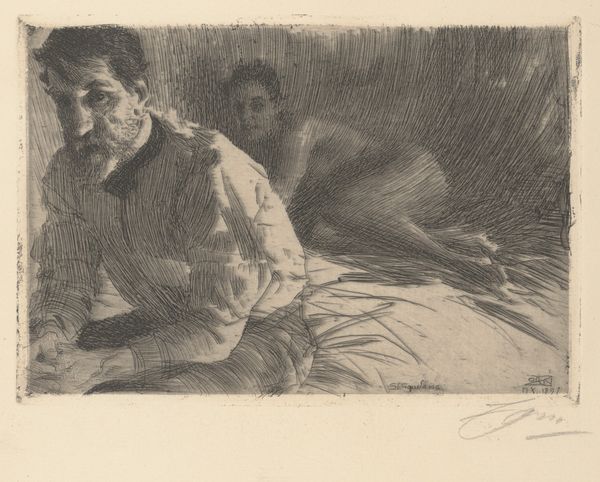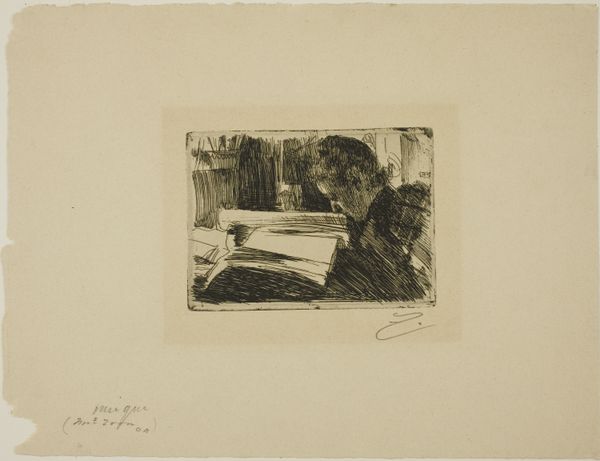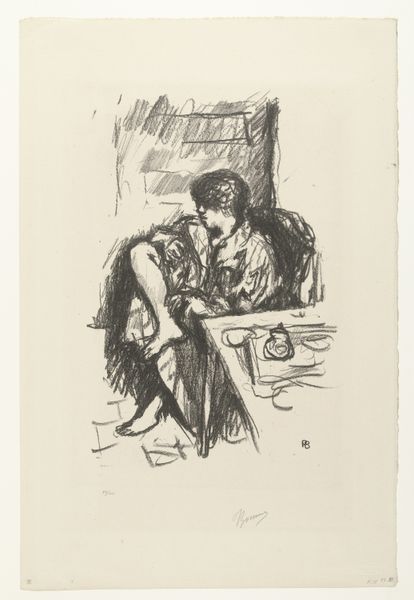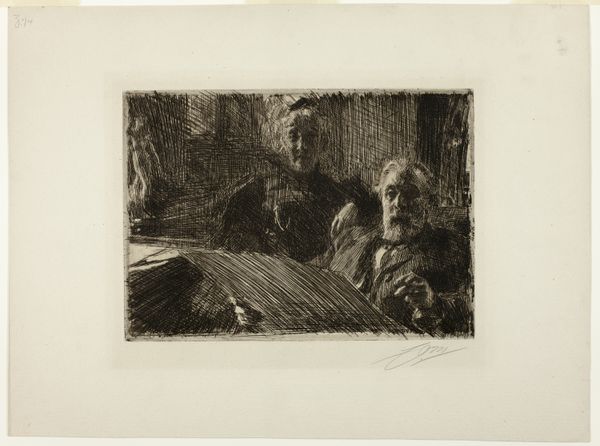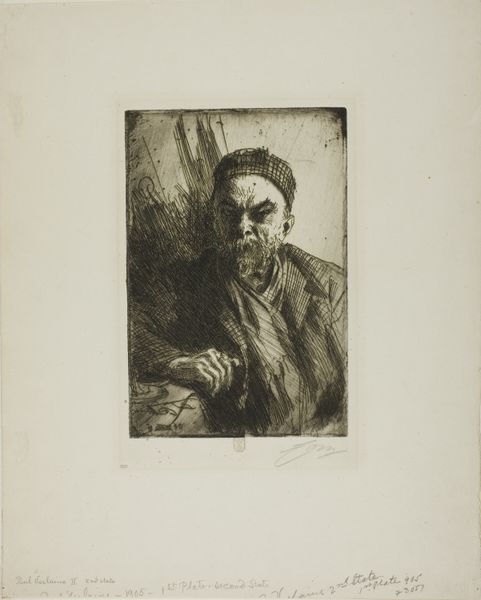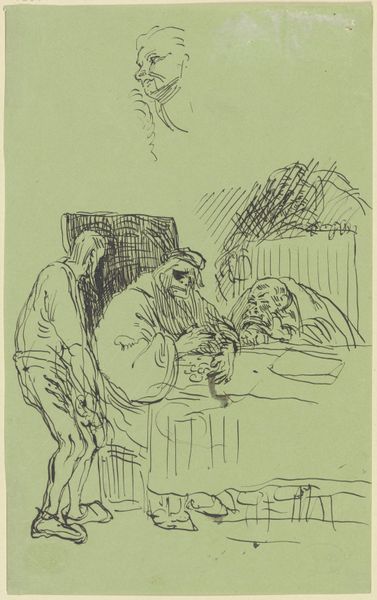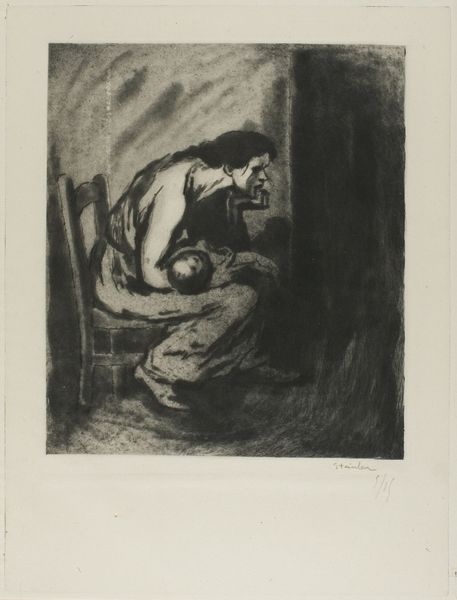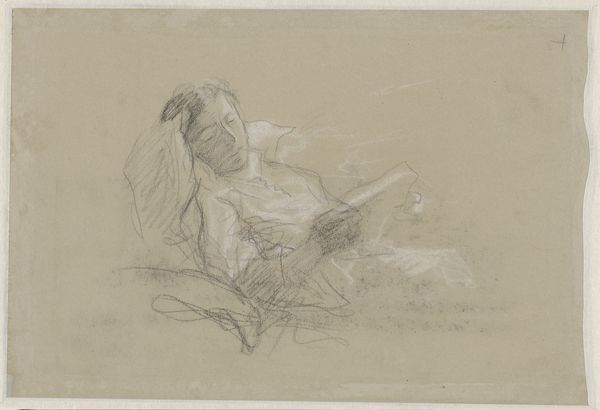
Augustus Saint-Gaudens II (Saint-Gaudens and His Model) 1897
0:00
0:00
Dimensions: 129 × 190 mm (image); 135 × 198 mm (plate); 226 × 279 mm (sheet)
Copyright: Public Domain
This is Anders Zorn's "Augustus Saint-Gaudens II (Saint-Gaudens and His Model)," a print made around the turn of the century. Its medium, etching, is elemental to its impact. The artist would have used a sharp needle to draw through a wax ground on a copper plate, exposing the metal. Then, the plate was submerged in acid, which bit into the lines. The result? A dense, velvety field of darks and lights. Zorn masterfully exploits the tonal range of the etching process. Look how the hatching defines form and creates atmosphere, particularly the way the light delicately models the body of the reclining model, contrasting with the more heavily worked figure of Saint-Gaudens himself. It’s a world away from the directness of drawing or painting. Etching allowed for subtle gradations and textures impossible to achieve by hand. The act of printing also allowed for this image to circulate widely, which democratized its impact. It makes you think about the layers of labor, both physical and intellectual, that contribute to its making. Ultimately, this print invites us to appreciate the artistry inherent in its very fabrication.
Comments
No comments
Be the first to comment and join the conversation on the ultimate creative platform.
